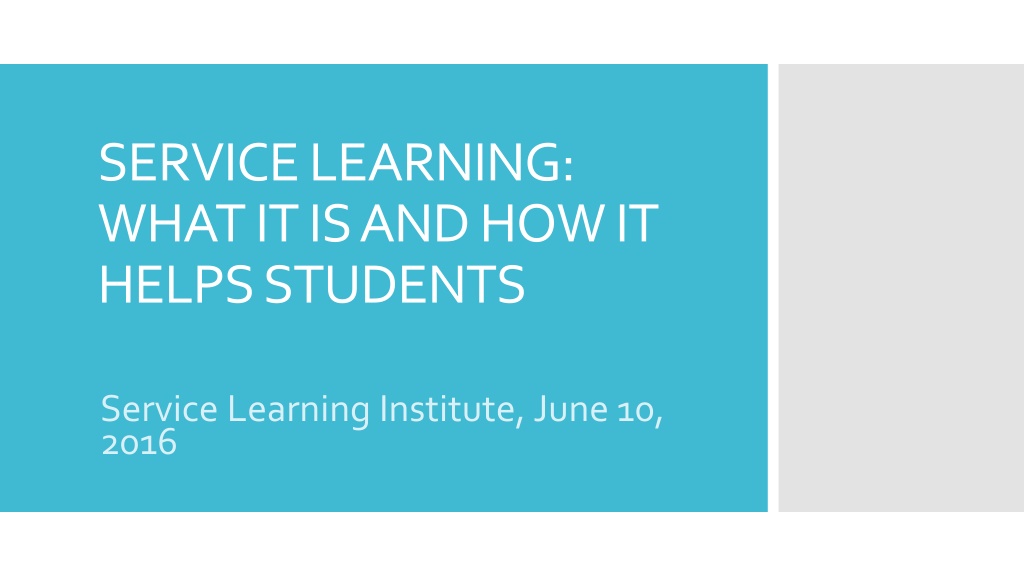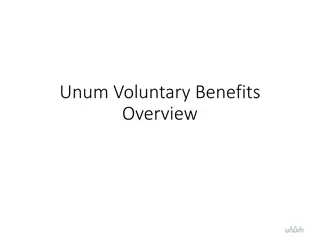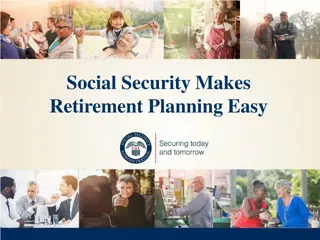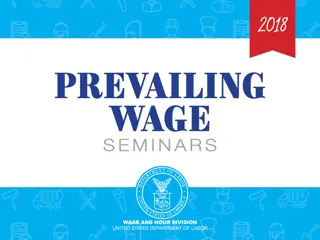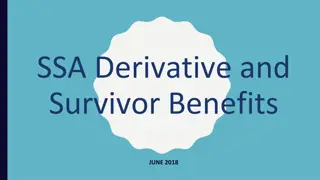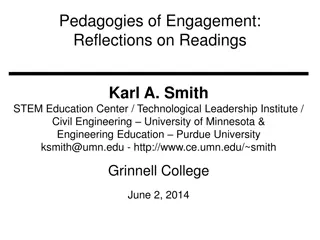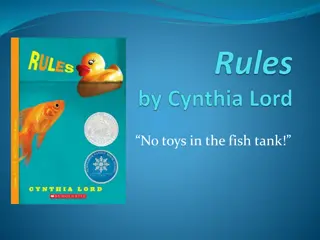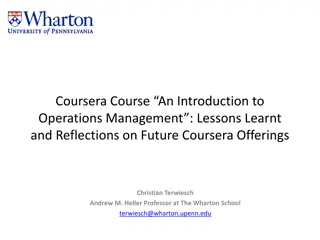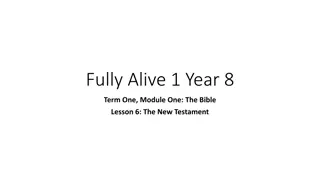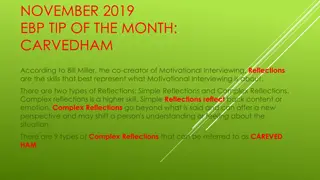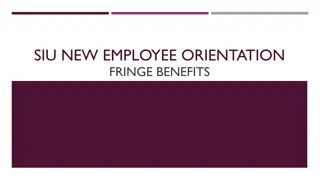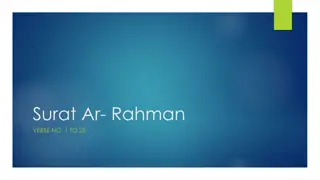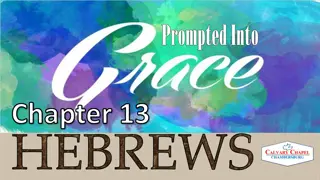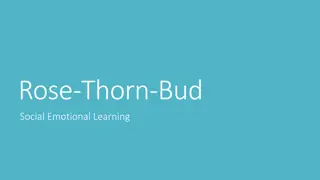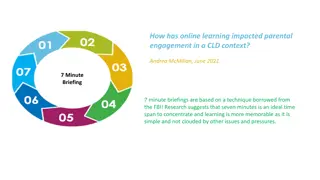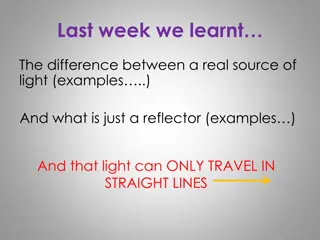Understanding Service Learning: Benefits and Reflections
Service learning is a method that combines community service with academic learning, personal growth, and civic responsibility. Benefits include improved relationships, retention of material, self-confidence, and soft skill acquisition. It emphasizes respect, reciprocity, relevance, and reflection. Reflections from students show insights gained through service experiences, questioning the education system and roles of parents and teachers.
Download Presentation

Please find below an Image/Link to download the presentation.
The content on the website is provided AS IS for your information and personal use only. It may not be sold, licensed, or shared on other websites without obtaining consent from the author. Download presentation by click this link. If you encounter any issues during the download, it is possible that the publisher has removed the file from their server.
E N D
Presentation Transcript
SERVICE LEARNING: WHAT IT IS AND HOW IT HELPS STUDENTS Service Learning Institute, June 10, 2016
Service Learning is a teaching and learning method that integrates critical reflection and meaningful service in the community with academic learning, personal growth, and civic responsibility. --Campus Compact/from Service-Learning Course Design for Community Colleges by Baratian, Duffy, Franco, Hendricks and Renner
The benefits of incorporating service learning in the community college classroom are many. Service learning: Fosters relationships within the classroom among students Fosters relationships with faculty Increases retention of class material, especially as it relates course material to the real world Improves student retention Increases student self confidence Aids in the acquisition of soft skills
Many people think that service learning is simply having students do some volunteer work and then reflect on what they did in a paper, presentation, journal, etc. Yes, but......
Students and faculty should not view themselves as DOING something FOR the Community Partner. The Four Rs are: Respect Reciprocity Relevance Reflection (Butin, 2010) Students and faculty should view the relationship as a PARTNERSHIP with both sides gaining something in the process.
Reflection: "I found myself seeing parts of my childhood in each one of them as I was growing up. It also had me thinking of my children and how they act in school. Are they the same way, do they lack [an] excitement in learning, do they not participate in class? Where did the excitement for learning get lost in our system? Are parents at fault? Are teachers at fault? Or is the school system at fault? Could it be lack of funding, programs have nowadays, that children are not able to enjoy all the extra activities those funds would pay for? I am starting to think they are all part of the reason." -Wright Student, Social Science 102, Spring 2016
Reflection: "In the past I have always had a form of stage fright, a kind of nervousness when formally presenting in front of an audience. Presenting to the children was very different for me. I did not feel nervous or anxious. I felt calm and confident. I was emboldened when the kids started to respond to the game of jeopardy, and thrilled when they began to participate. I felt that as I was attempting to help them, that they were also helping me." -- Wright Student, Social Science 102, Spring 2016
Reflection: "When I was first informed that there would be a service learning assignment I was a little thrown off. I didn't think I had use for doing something outside of class on my own time. I along with most of my peers found it pretty inconvenient to say the least. Despite my former opinion or my peer s opinion, I honestly believe now that I did a service to the Albany Park Community as they did to me. Service learning projects were intended for learning experiences for both the person who's conducting the service and for the children who are taking in the information. --Wright Student, Social Science 102, Spring 2016
Direct Service What most people think of when they think of "service or "volunteering", involves person-to- person activities. Example: tutoring young children. Indirect Service Activities where students do not interact directly with recipients. Examples: stocking a food pantry, creating a newsletter for a senior center, or cleaning up a playground. Types of Service Learning Advocacy - Activities to create awareness of a problem in the community. Examples: sponsoring a town meeting, designing posters, putting on a play that draws attention to the issue. Research Activities in which students collect data or do research and report on information in the public interest. Example: completing an energy audit of your college and then suggesting ways to reduce energy usage. (Kaye, 2010)
Sometimes you can combine two together! The following video is an example of a service learning project done by the University of Wisconsin at Milwaukee's Theater Department and SouthShore Connecting Caring Communities, a group that advocates to help older people stay in their homes and be active members of the community. http://www.islandsofmilwaukee.org/crossings
There are two basic structures for service learning incorporation, each with distinct advantages and disadvantages. Structuring Service Learning in the Classroom Individual, student-driven selection of partner Small group or whole class projects
Individual, student-driven selection of partner Pros: Students get to choose a project that aligns with their interests and career goals. Students take full ownership of their service learning. Students can do a more substantial time-commitment since they only have to match their own and the community partner's schedules. Cons: The project does not foster on-campus relationships with other students or faculty. Faculty cannot always ensure that the work is relevant or even worthwhile. Students sometimes look for the easy way out and do not challenge themselves.
Small group or whole class projects Pros: Project fosters on-campus relations which other students in the class as well as the faculty member. Project fosters relations between faculty, the college and the community partner to grow and deepen over time. May allow for more guidance of students during the service learning project from both community partner and faculty member. Cons: Students are required to work for a community partner or on an issue that they may not be interested in or may even disagree with. Time involved is limited due to the number of people's schedules that must be accommodated. Students can sometimes fail to take responsibility since they are part of a group.
One More Consideration for Implementing Service Learning at Wright College Many of our students have substantial time constraints many work 30+ hours a week, have family commitments, and are also taking a full course load. Some possible answers: Making service learning only voluntary though you miss many of the benefits that would accrue to those who are possibly most in need of it. The most confident and best prepared students are most likely to take advantage of it. Finding on-campus service learning opportunities (Wright College or the campus community as a partner WiYC, Peer-Mentor Program, Library are possibilities one faculty member I believe is working with the Wellness Center on a brochure). Look around campus and scout out possible needs that are not being addressed. Finding virtual service opportunities Diplomacy Lab with U.S. State Dept. is one, but there are many organizations that might be open to having students help them through research or advocacy type activities that can be done on-campus.
Service Learning Paperwork To effectively administer and evaluate our Service Learning Program, all service learning faculty must make sure the following are completed and turned into the Dean of Instruction's Office by the end of the semester: Student Agreement and Release Form Student Pre-Service Survey Student Post-Service Survey Faculty Post-Service Survey Community Partner Post-Service Survey There is also an optional Student Volunteer Hours Log. I send these forms via email every semester to all Service Learning Faculty.
